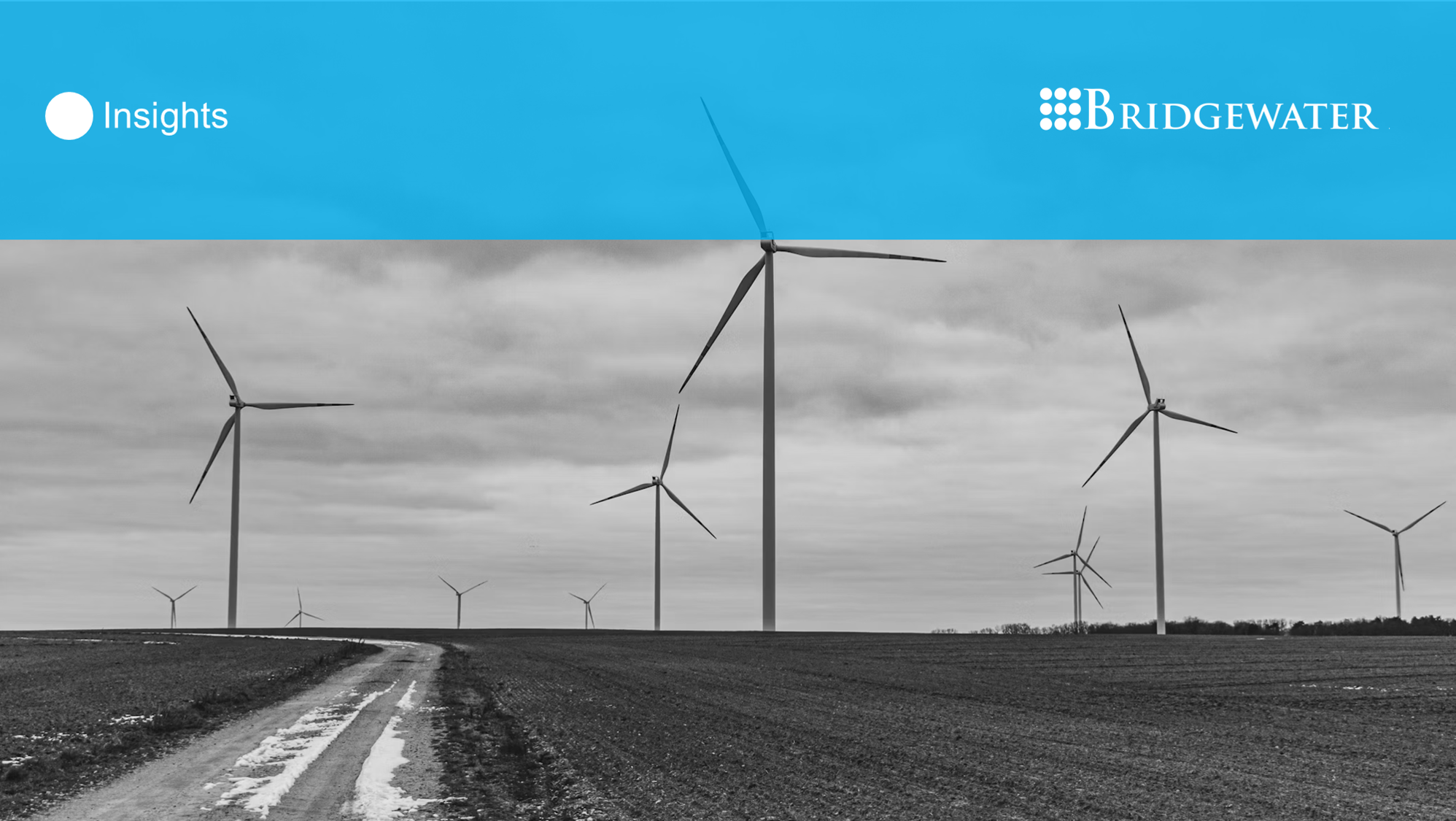
Green Investments: Unleashing Africa’s Renewable Energy Potential Through FDI
 Bridgewater Insights | 29th April 2025
Bridgewater Insights | 29th April 2025

 Bridgewater Insights | 29th April 2025
Bridgewater Insights | 29th April 2025
Introduction
Africa is a sleeping giant
when it comes to renewable energy, endowed with abundant energy resources,
including solar, wind, hydro, and geothermal resources. According to the 2024
EY Africa Attractiveness Report, renewable energy accounted for about 50% of total
Foreign Direct Investment (FDI) inflows into Africa in 2023, demonstrating the
continent’s major role in global renewable energy generation. To really appreciate
this keen interest from investors in Africa’s renewable resources, let’s pull
back the curtain and understand the continent’s renewable resources potential.
Africa's
Renewable Energy Resources and Potential Growth Areas
Renewable energy is the new cornerstone
of Africa’s energy future, with the continent’s energy capacity projected to surge
from 180 gigawatts (GW) by 2030 to an astonishing 1.2 terawatts (TW) by
2050. This transition is more than just a shift in power sources; it’s a
catalyst for the continent’s economic transformation and according to
Sustainable Energy for All, has the potential to generate between 8 and 14
million high-quality jobs.
The rapid adoption of
renewable energy can be attributed to falling costs, making these technologies
more accessible than ever. For instance, the levelized cost of electricity
(LCOE) for solar PV has dropped by nearly 90%, from $400/MWh in 2011 to just
$41/MWh in 2022, making solar an increasingly affordable and viable option for
Africa. In fact, Africa’s vast solar potential alone could generate over 10 TW,
while wind and hydro could contribute an additional 3 TW and 2.5 TW,
respectively. These numbers tell a compelling story: Africa isn’t just catching
up; it’s positioning itself to lead the global energy transition.
The Critical
Role of FDI in Africa’s Renewable Energy Space
FDI has and continues to play
a crucial role in Africa’s renewable energy revolution. Given the continent’s
constrained domestic financing, FDI has become the lifeblood of large-scale
energy projects, breathing new life into Africa’s transition to sustainable
power. In 2021 alone, Africa attracted about $13 billion in renewable energy
investments, with South Africa, Egypt, Morocco, and Kenya reaping significant
benefits from international capital to develop wind, solar, and geothermal infrastructure.
A prime example of FDI’s
transformative impact is South Africa’s Renewable Energy Independent Power
Producer Procurement Programme (REIPPPP), which has unlocked billions of
dollars in foreign investment, financing nearly 60% of the country’s solar and
wind power projects. Similarly, Kenya’s successful geothermal project demonstrates
the pivotal role of external funding. With an estimated 10,000 megawatt (MW) of
untapped geothermal potential, Kenya has harnessed international expertise and
financing, particularly from the World Bank and the Japanese government, to
develop the Olkaria Geothermal Power Station, solidifying its position as Africa’s largest producer of geothermal energy.
Beyond infrastructure
development, FDI is also a job creator. The renewable energy sector,
particularly solar and wind, has been an employment powerhouse. Egypt’s Benban
Solar Park, for instance, is projected to create over 6,000 jobs
post-construction.
Moreover,
renewable energy investments serve as Africa’s frontline defence against
climate change. Projects like Morocco’s Noor Ouarzazate Solar Complex are significantly reducing carbon emissions and advancing global sustainability
goals. Therefore, as Africa positions itself as a major player in the global
energy transformation, FDI remains the fulcrum to ensure that the continent not
only keeps the lights on but also leads the charge toward a greener future.
At first glance, Africa’s vast
renewable energy potential might suggest an abundance of readily accessible electricity
to its people. Nothing can be further from the
truth. In fact, over 43% of the continent’s population lacks access to
electricity, and the energy landscape is fraught with aging infrastructure,
frequent power outages, and high electricity tariffs. Recognizing this urgency,
African Heads of State, alongside private sector leaders, civil society, and
development partners, including the World Bank Group and the African
Development Bank Group, recently convened at the Mission 300 Africa Energy
Summit in Tanzania, to outline strategic measures to expand electricity access
to 300 million people across the continent by 2030. Plus, the growing private
investor interest in Africa’s energy sector, can be leveraged to bridge the
continent’s energy access gap, particularly through decentralized solar
solutions that extend power to remote and underserved communities.
Case Studies
of Successful Renewable Energy Projects
Several landmark projects
stand as success stories of how FDI is reshaping Africa’s energy landscape and
driving sustainable development. One of such examples is the Noor Ouarzazate
Solar Complex in Morocco, a $9 billion investment co-financed by the World Bank
and the European Investment Bank. As one of the world’s largest solar power
plants, this 580 MW facility has the capacity to electrify over a million
homes. The project also plays a critical role in Morocco’s ambition to generate 52% of its electricity from renewables by 2030, while serving as a major
employer in the country.
Kenya’s Lake Turkana Wind
Power project is another testament to FDI’s impact. As the largest wind energy
project in East Africa, this 310 MW wind farm was financed by the African
Development Bank, Standard Bank, and several European investors. By reducing Kenya’s
reliance on fossil fuels, the project has helped stabilize energy costs and has
created local employment opportunities, fostering regional development.
Ethiopia’s Gibe III
Hydroelectric Dam, with a capacity of 1,870 MW, is one of Africa's largest
hydropower projects. Funded through a mix of government resources, private
sector investment, and international financing, the dam is central to
Ethiopia’s ambition of becoming a regional energy hub, generating substantial
revenue through electricity exports to neighbouring countries.
The
Benban Solar Park in Egypt, Africa's largest solar park, is another testament
to how FDI can revolutionize a country’s energy sector. As the largest solar park in Africa, with a
total capacity of 1.8 GW, Benban is expected to provide clean energy to nearly
one million homes while reducing annual carbon emissions by two million tons. The
project also created tens of thousands of jobs during its construction phase,
and it continues to offer long-term employment opportunities in operations and maintenance.
Conclusion
Africa's renewable energy transformation
is no longer just a dream; it is a reality being built, one megawatt at a time.
With a sustained inflow of FDIs, declining costs, and ongoing and successful
large-scale projects in Africa’s renewable energy space, the continent is on
the brink of an energy renaissance. By harnessing the power of investment,
strategic partnerships, and innovation, Africa cannot only bridge its energy
gap but also emerge as a global leader in clean energy.